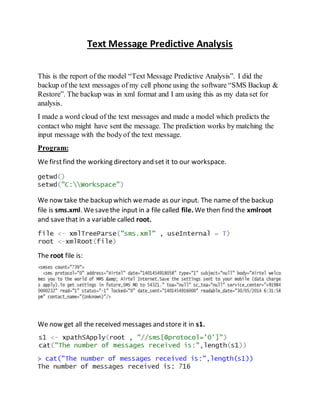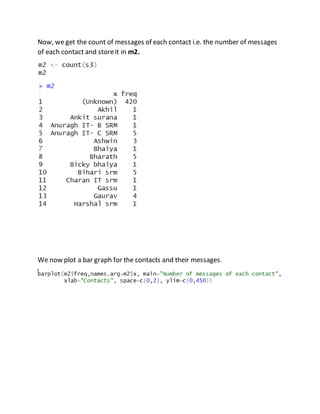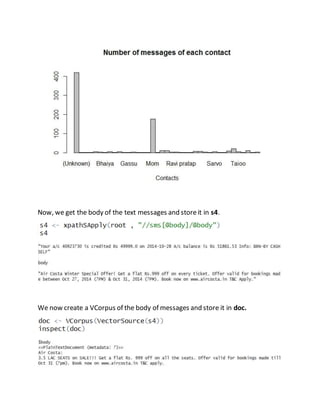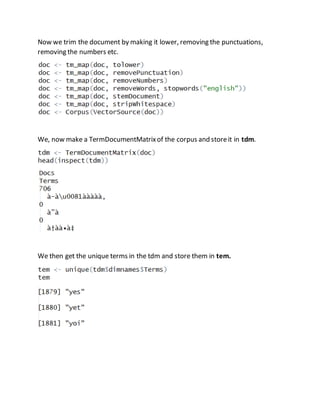This document summarizes a model for predicting the contact who sent a text message based on analyzing backup text messages. The model first creates a word cloud and counts messages by contact. It then builds a term document matrix of message bodies, calculates frequent terms, and finds terms associated with "call". The model takes a new message as input, trims it similarly to the training messages, and identifies contacts who could have sent it by matching terms.








